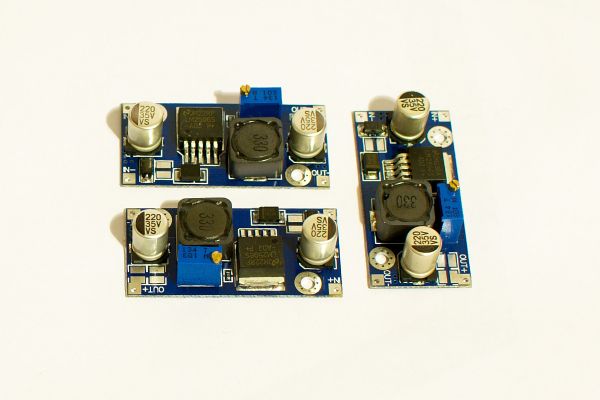There are different types of DC-DC regulators. The most common are linear and switch mode regulators. Everyone that has tinkered with electronics has probably used a 78xx series linear regulator. They are easy to use since they don’t need any special components. With most linear regulators you just put a capacitor on the input and one on the output and they will work. Always check the datasheet to see which type and capacity is recommended. Unfortunately linear regulators are very inefficient, because of that they can produce lots of heat. For example if you feed a 7805 (5V linear regulator) 12V and you draw 1A from it, the regulator will need to dissipate 7W of heat. So that 7W goes to waste, not ideal for a battery powered or energy efficient device.
About 2 years ago I started playing with electronics and was browsing Tayda electronics voltage regulator section for a regulator that could output more then 1A. I found the LM2576 5V 3A regulator and ordered some. I didn’t know what I had bought until I read the datasheet.
The LM2576 is a switch mode regulator. It’s a pretty old design, that’s why it’s so cheap ($0,76 @ Tayda). I’m not going to explain how they work, there is wikipedia for that.
Switch mode regulators are more efficient then linear regulators. They can not only lower the voltage (buck converter) some of them can also up the voltage (boost converter) or they can do both (buck-boost converter). Most switch mode regulators need some more components then linear regulators to make them work.
For the LM2576/LM2596 you need 2 capacitors (input/output), a big inductor and a schottky diode. You also need to take into account that you can’t just place the different components like you want on a PCB. The datasheets of these regulators will have a reference design to show you how to place them to get the best results. Not following these guidelines or using components with not the right specifications and you are risking that they just don’t work or produce lots of noise. I have designed a couple of PCB’s using the LM2576 and LM2596 and got them to work, so it’s not that hard ![]()
If you don’t want to design your own PCB’s you can buy small boards with a switch mode regulator on Ebay or from Chinese webshops. So today I decided to test some of the boards I have bought from China.
LM2596
The most popular board is one with an LM2596 adjustable regulator. The LM2596 is a 3A 150kHz stepdown regulator, it’s a pretty old design. More modern switch mode regulators switch at +1MHz.
For more detail: Testing switch mode voltage regulators

